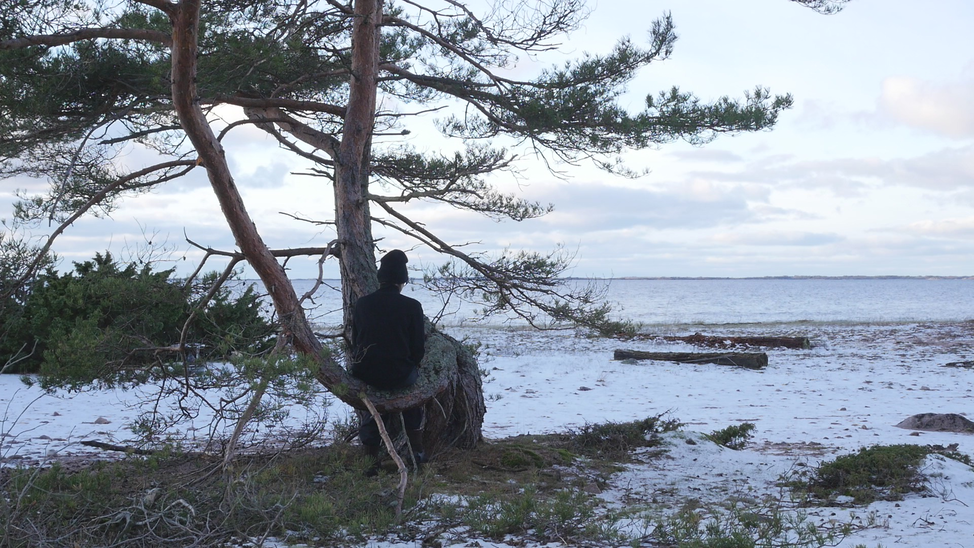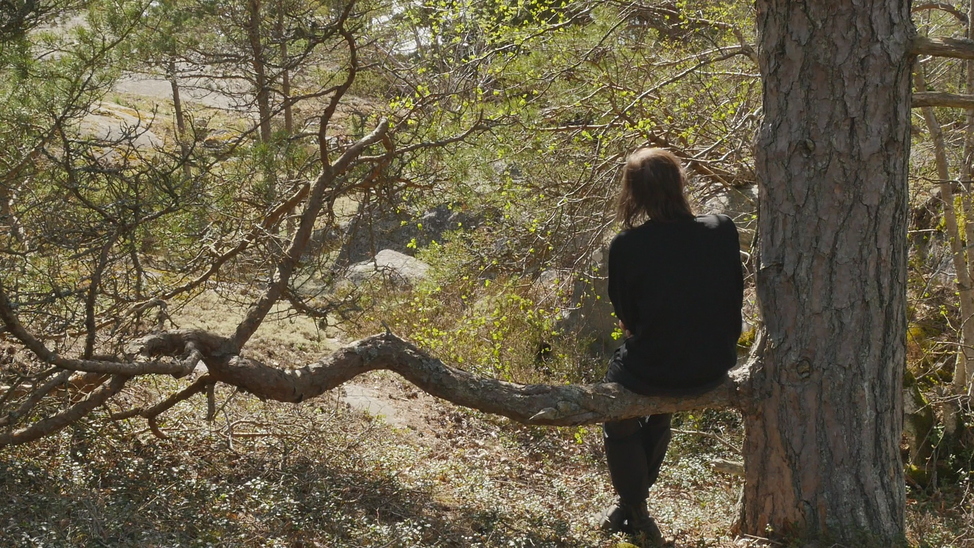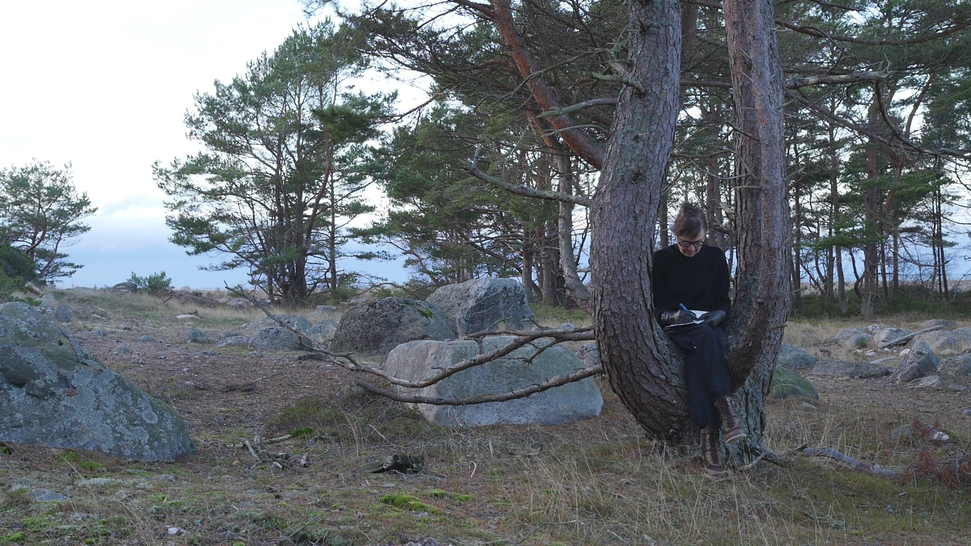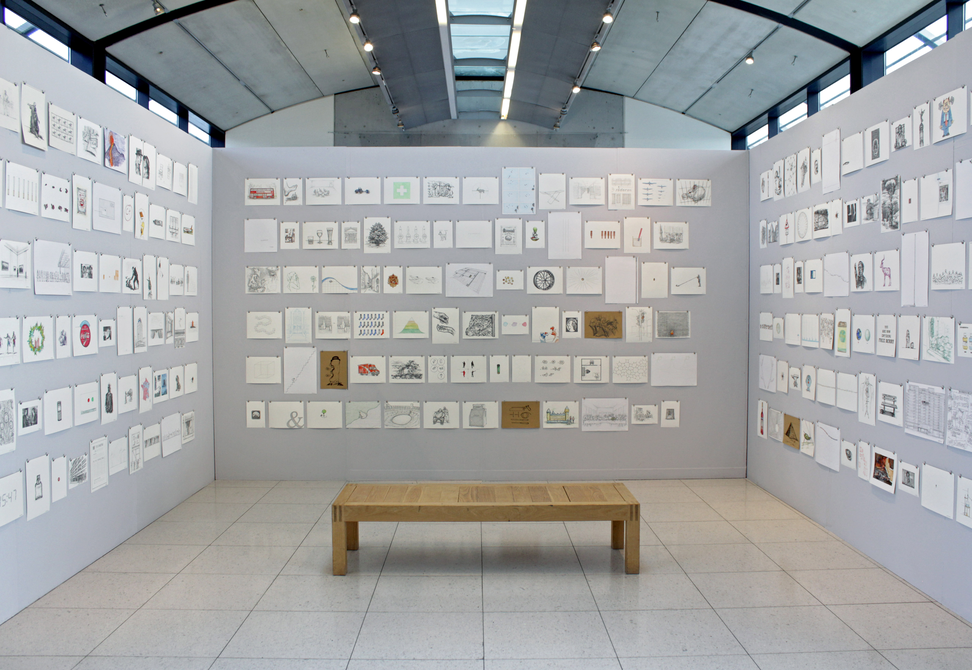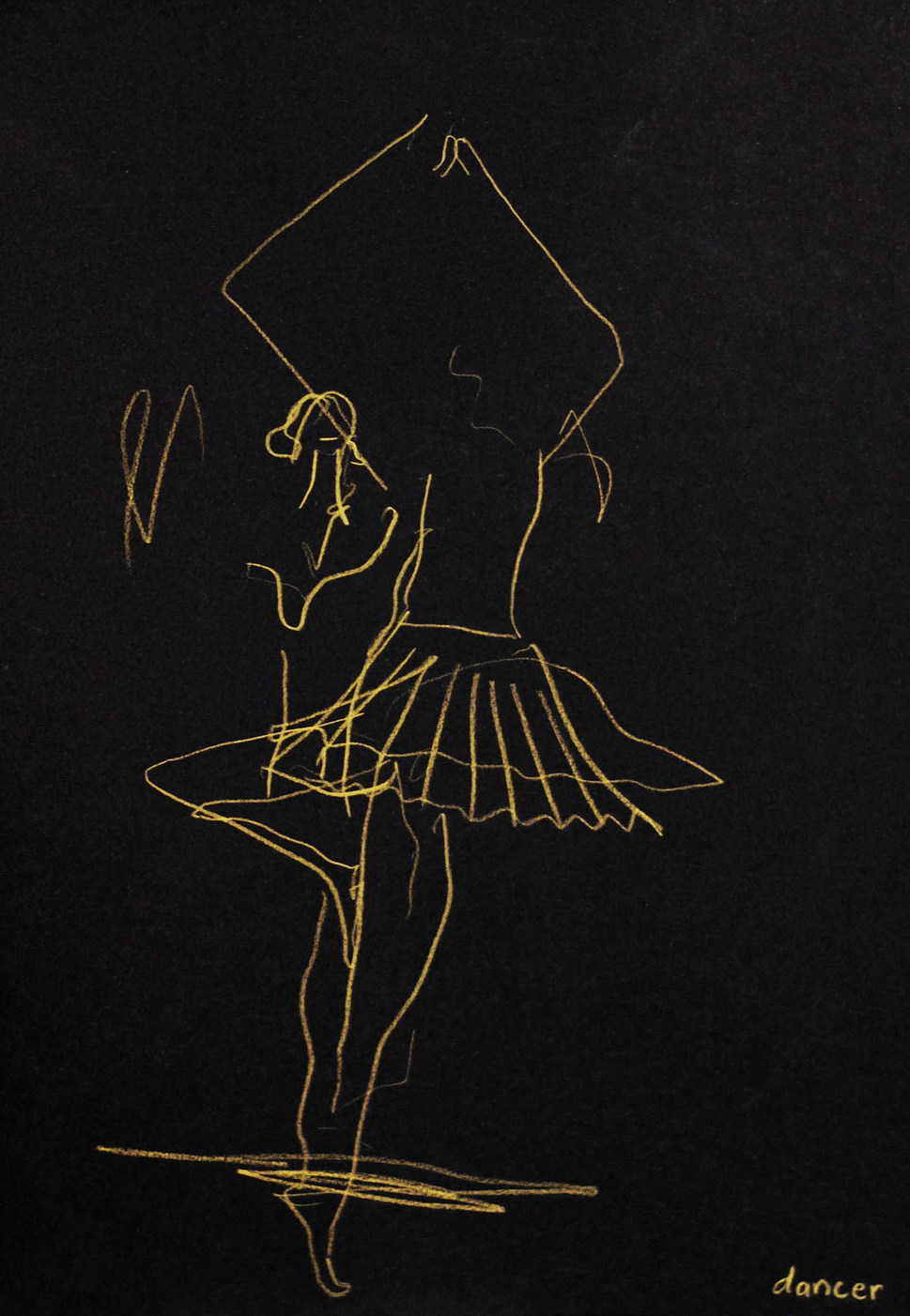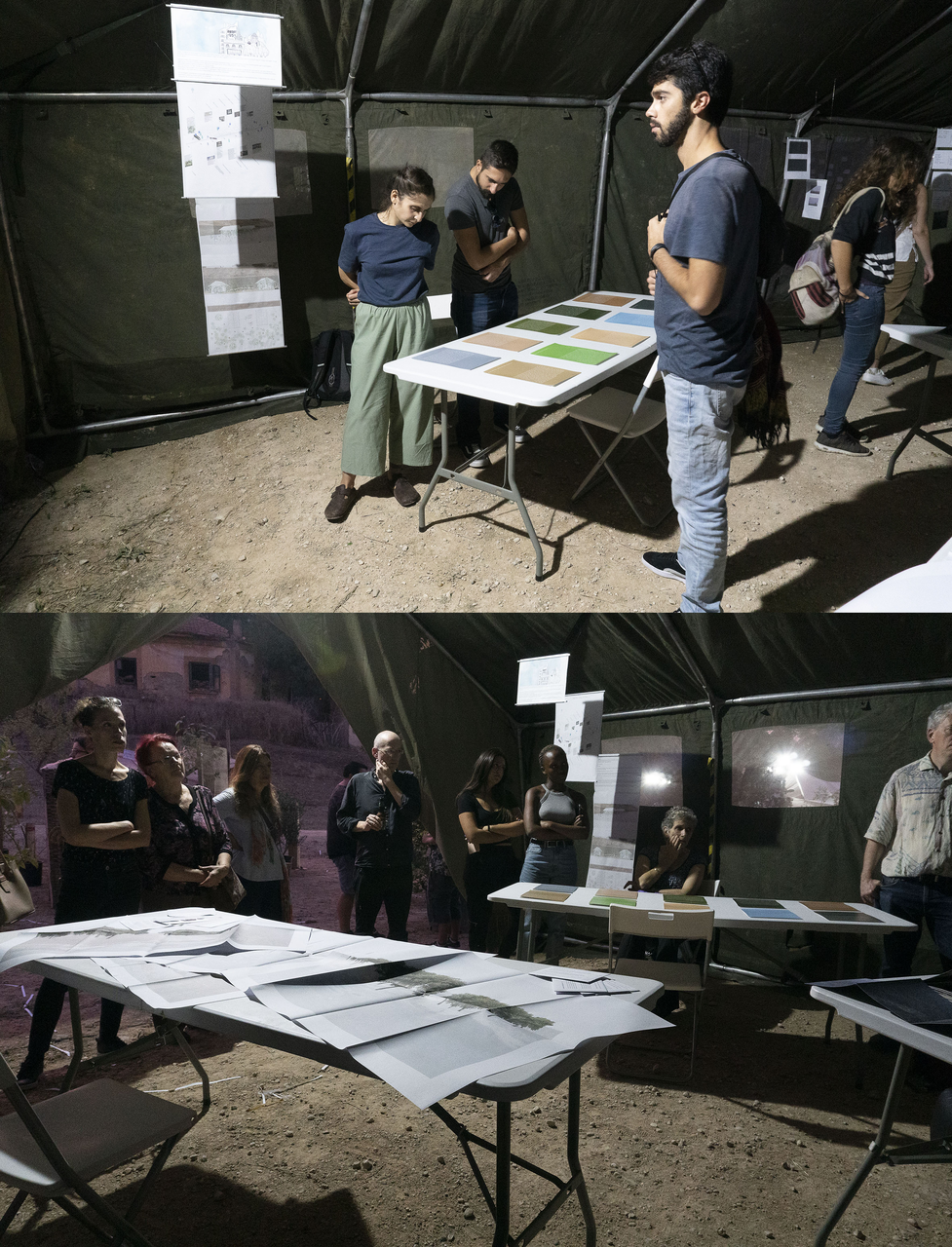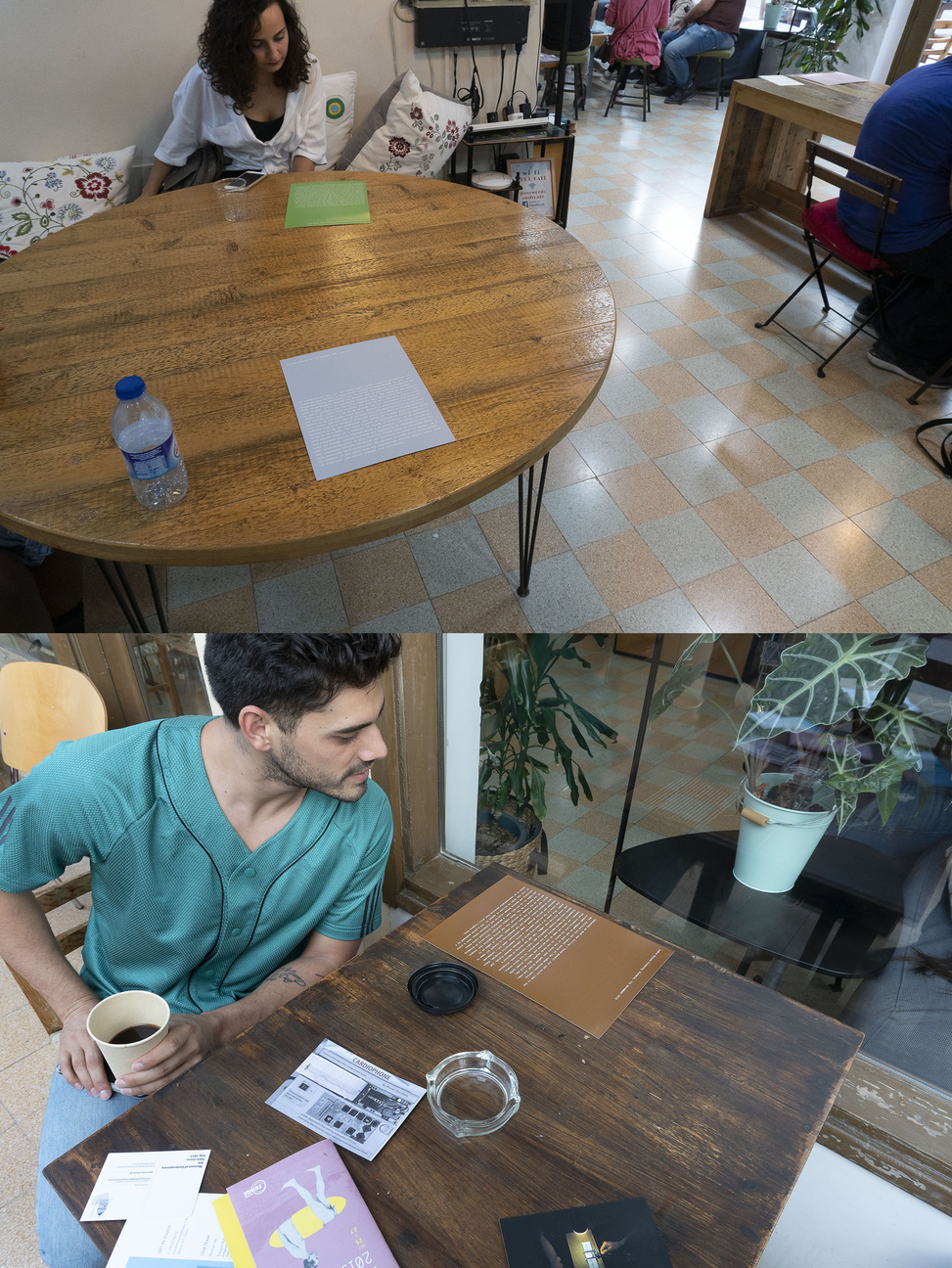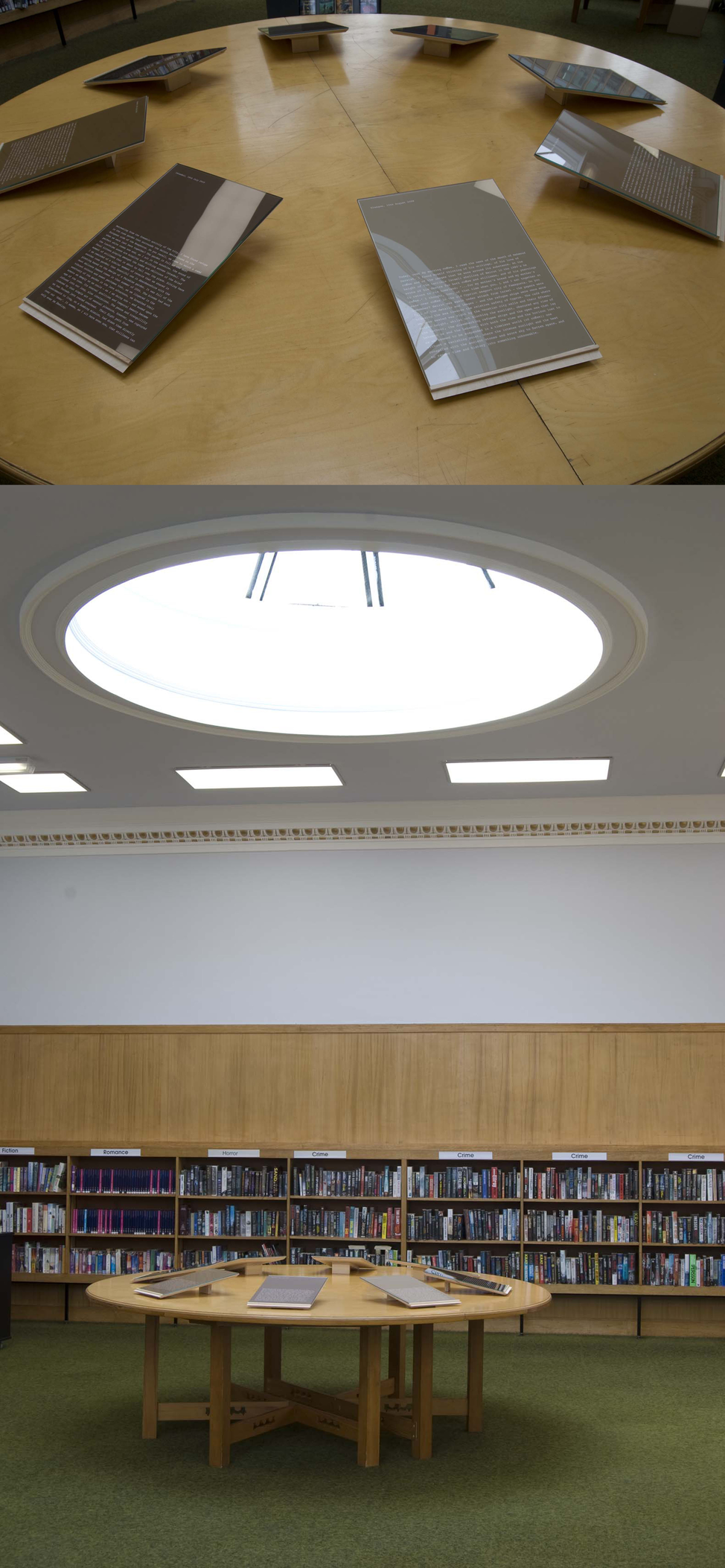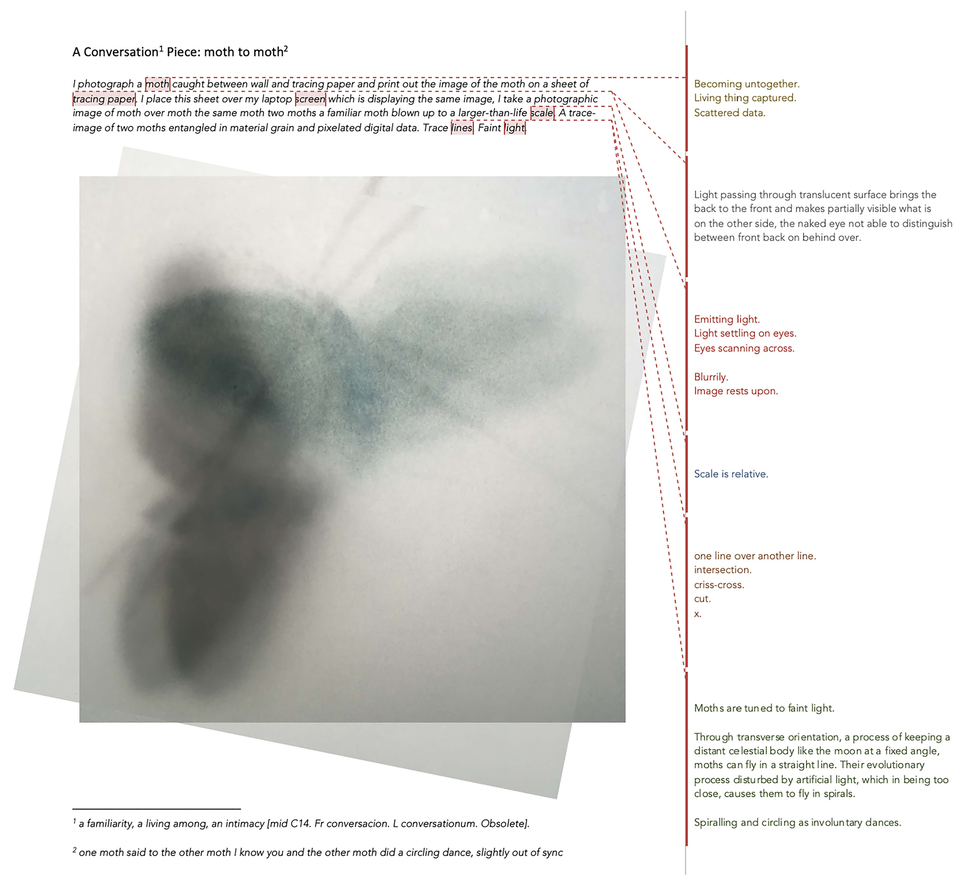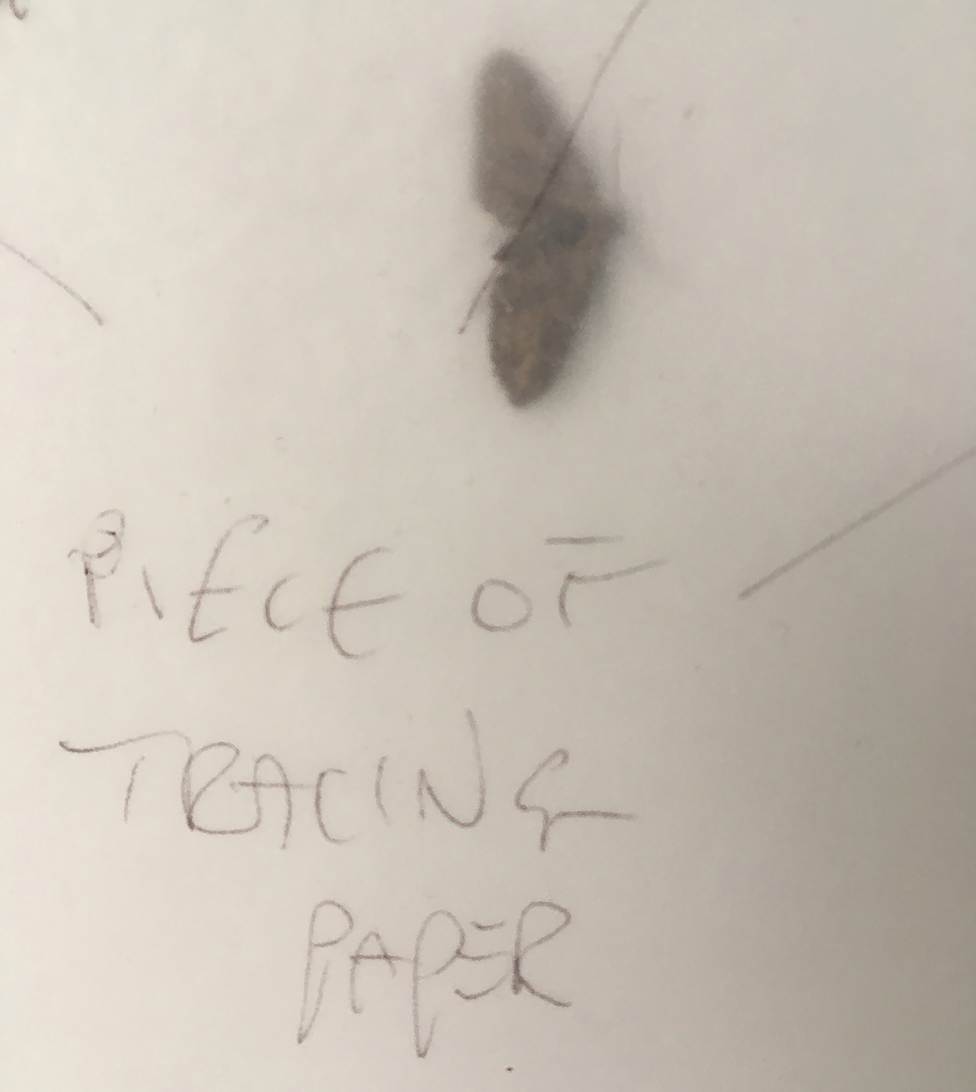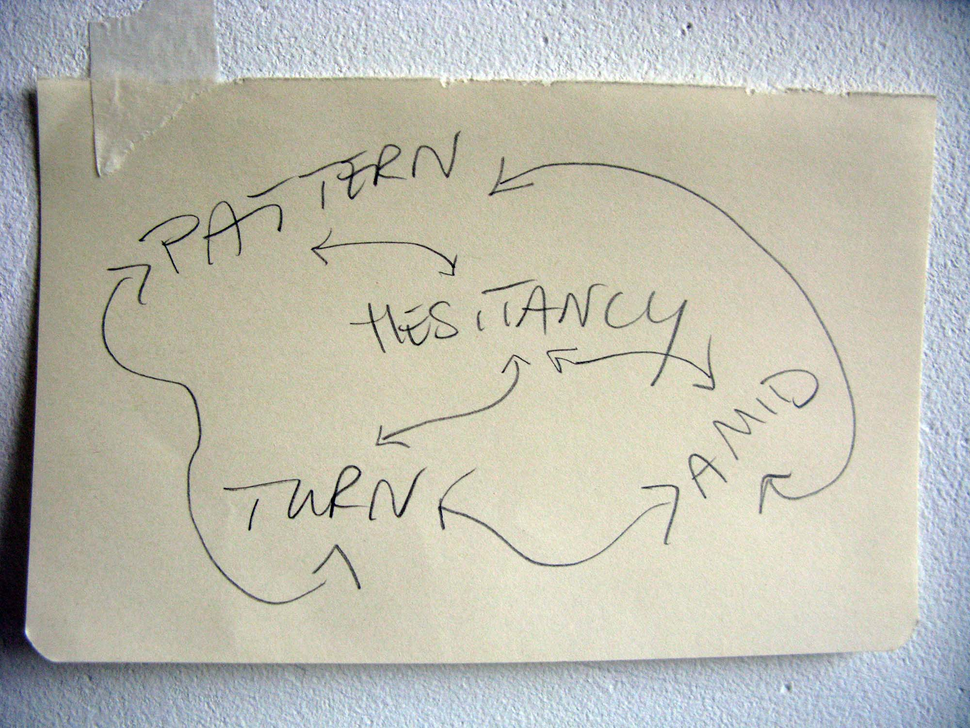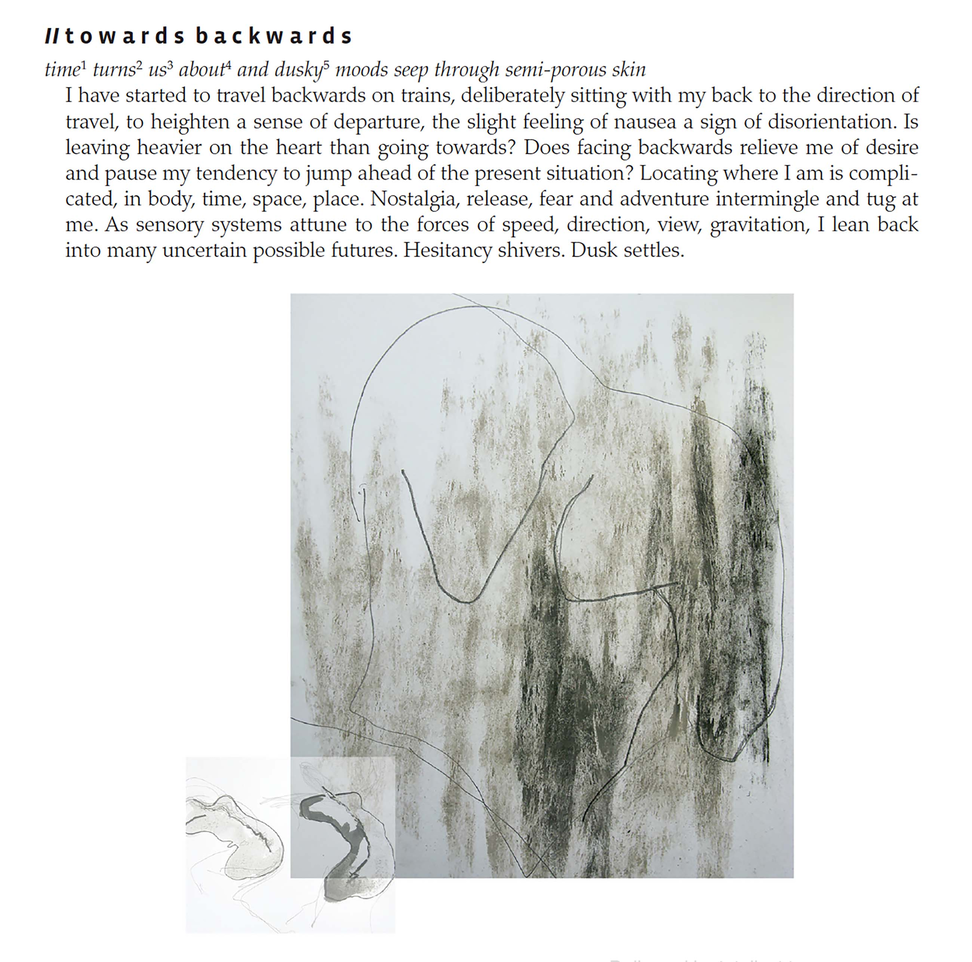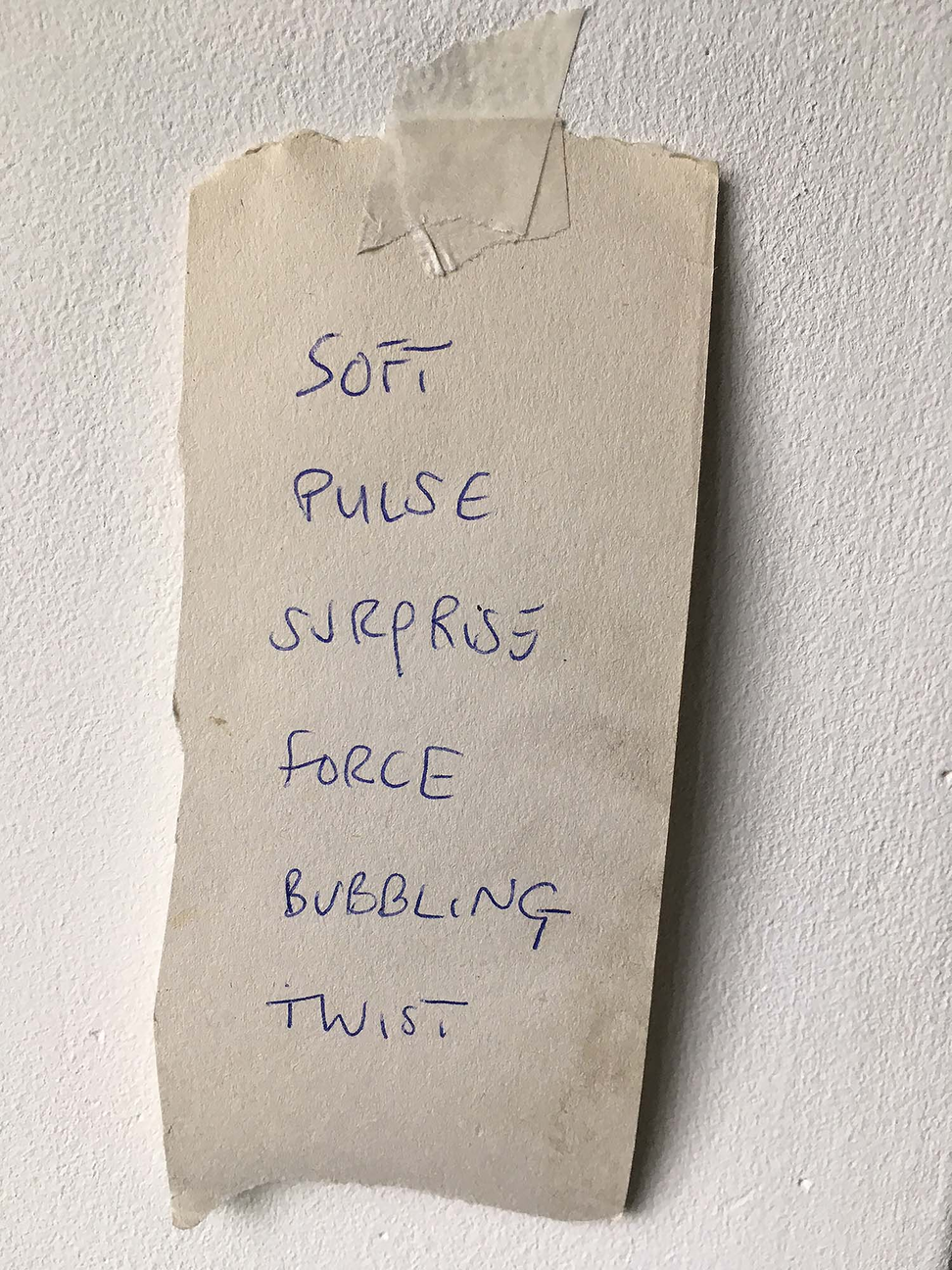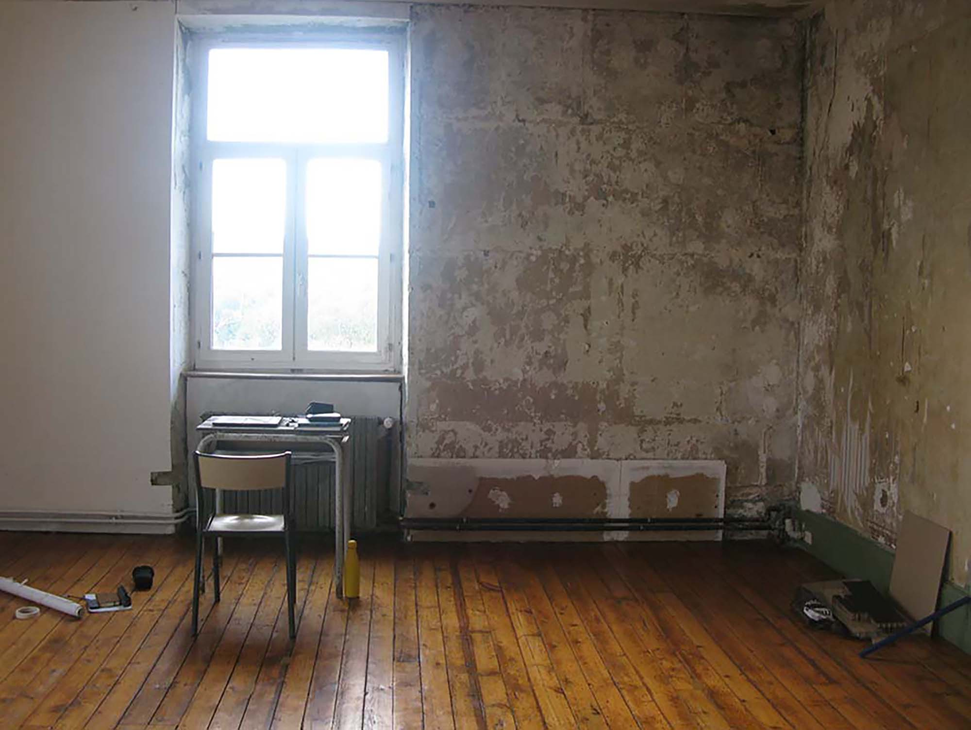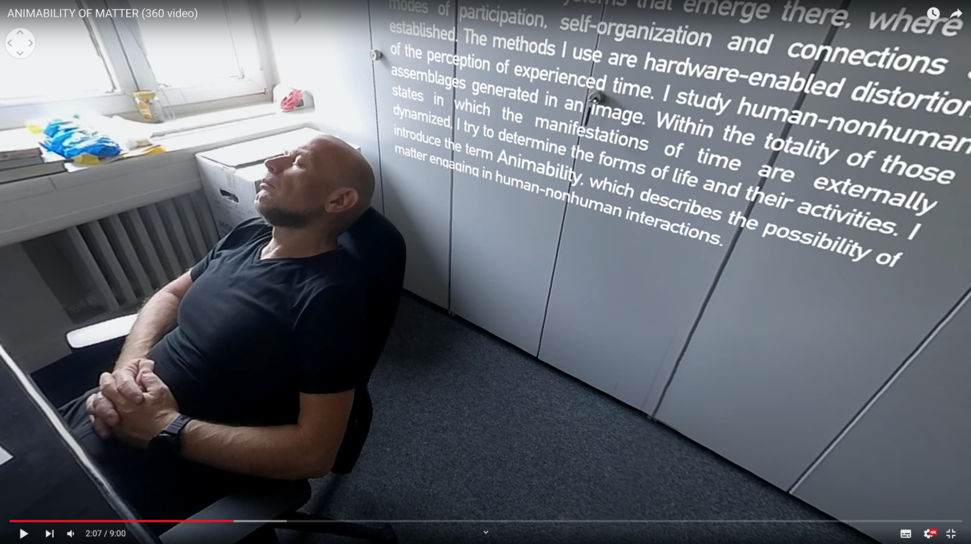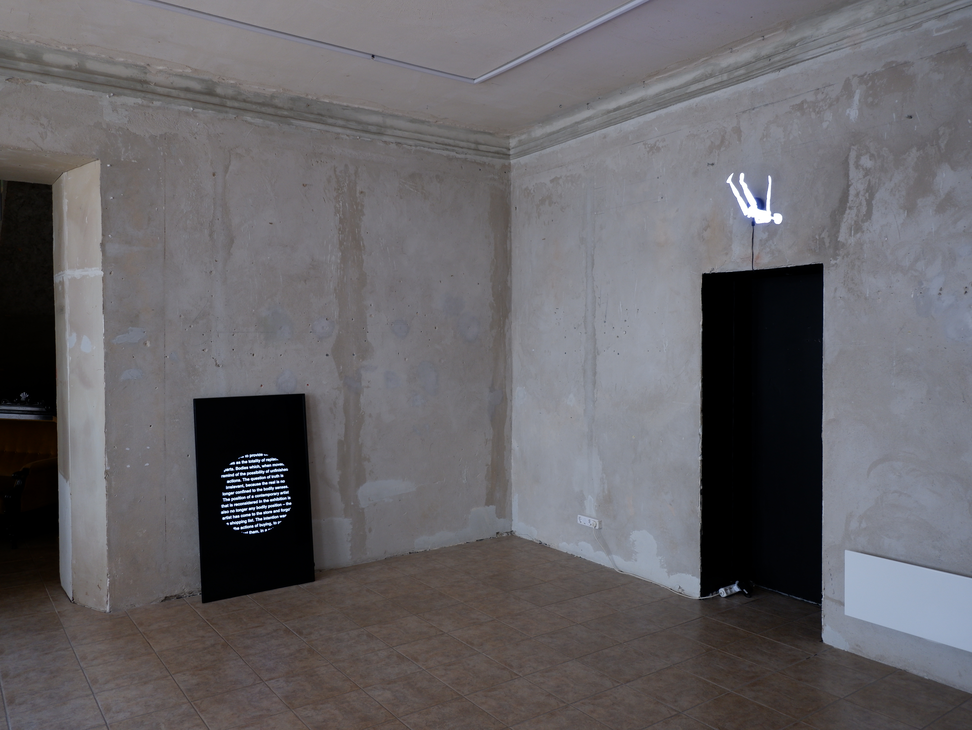<< Annette Arlander
My artistic research is interlinked with my artistic practice, which is focused on vegetation, especially trees, and often involves site-specific work, performances for camera, recorded speech, video installations and experiments concerning the environment, while taking place in the border zone between performance art, media art and environmental art. Recent research projects include Performing with Plants (2017-2019), Meetings with Remarkable and Unremarkable Trees (2020-2022) and the ongoing Pondering with Pines (2022- ). The main concern is how to develop ways of recognizing and engaging with the subjectivity of life forms such as trees, which we tend to consider as wholly ‘other’. How to develop acts of thinking, reflecting, pondering or speaking with trees, next to them or in some form of collaboration with them. How to consider historical, cultural, material and local aspects when encountering specific trees. How to develop imaginative and poetic ways of encountering pine trees and engaging with them. Language – both written and spoken – is thus more of a tool and a method rather than research topic in my work. Although predominantly English, I occasionally use my native Finnish and Swedish well.
LINK TO - Performing with Plants (2017-2019)
LINK TO - Meetings with Remarkable and Unremarkable Trees (2020-2021)
LINK TO - Pondering with Pines – Miettii mäntyjen kanssa – Funderar med Furor (2022- )
I wrote my first letter to a tree after performing with that tree, a small pine in Stockholm, for a year, to use as a voice-over in the video, and I wrote the first letter to a tree by the tree as a performance for camera to an olive tree in Ulldecona, Catalonia, at the end of 2019. Since then, I have written to many trees, sitting in them or on them or next to them, using Finnish, Swedish or English, and added the text as a recorded narration or as subtitles to the videos. The two examples here below are letters written to pine trees on Örö Island in 2020-2021 as part of the project Meetings with Remarkable and Unremarkable Trees. In a recent publication, Performing and Thinking with Trees (2022) I discuss various approaches, including writing with trees.
CREDITS AND LINKS
1. Annette Arlander, Kära Tall (Another Day with a Pine), 14 min, performed 28.11. 2020 every hour between 9 am and 4 pm. See here.
2. Annette Arlander, Dearest Pine (with text), 15 min 45 sec, performed 21.1.2021. See here.
LINK TO - “Dear Olive Tree.” Journal of Embodied Research, 4(2): 5 (19:40).
The first tree I talked to, in Swedish, and recorded my talk with a handheld microphone, was a pine tree on Örö Island in January 2021. Since then, I have increasingly preferred talking to writing when addressing trees, partly because of the quality of an extempore performance is thus accentuated, and used my phone as recorder, synchronized with the video recording. In the spring 2022 I returned to Örö and made an experiment, which included finding a new pine tree, talking, and performing for camera with them and editing the video and a podcast episode every day for six consecutive days. This I did as part of the project Pondering with Pines. Recently I have increasingly explored talking with trees, exemplified by the podcast Talking with Trees.
CREDITS AND LINKS
1. Annette Arlander,Tala om det för tallen 1 (Tell it to the Pine), 8 min 50 sec, performed on Örö 11.1.2021. See here.
2. Annette Arlander, Pondering with Örö Pines (1), 15 min, performed 13.5.2022. See here.
LINK TO - Talking with Trees – Puhetta Puille – Talar med Träd podcast
<< Dave Ball
My current artistic research stages both a retreat from and an embrace of language. It is simultaneously repelled by and drawn to the illusory promise of language as a gatekeeper of meaning.
Meaningfulness is a central problematic in my work. Emerging in a tradition of (post)conceptual art, I understand my task as an artist as that of bringing something into the world that “means” (for what else is at stake in critical practice?). And yet, if the meaning that emerges becomes too legible, determinate, or stable, it is deemed to have failed – losing its vitality, potency, and, crucially, its relationship with the new.
If the paradoxical task of the creative artist is, as Donald Barthelme put it, to speak of the ‘as-yet-unspeakable,’ then my research finds its escape from that conundrum through a deployment of “tactical absurdity” – a deliberately oxymoronic conception of artistic practice that acknowledges and embraces its own impossibility. Aimed squarely at the production of communicable meaning, it operates through absurd strategies that play on its absence.
Specific projects question the extent to which language conditions the intelligibility of the world. Structuring, supporting, destabilising, or problematising their material, words and sentences are imposed (or removed) in given representational contexts – systematically opening them up to an absurd play of signification.
How do we make sense of the social and psychological worlds we encounter in our lives? How do we make them meaningful? How do we speak about them? And what do we understand when others speak of them?
The latest iteration in a 35-year-long attempt to visualise every word in the Concise Oxford Dictionary in alphabetical order, A to Z: Eagle to Eyelet, Improvised takes the form of a five-hour performance in which a small team performs short improvised scenes for each of the 315 words beginning with “e” in the dictionary.
Begun in 2011, A to Z is a series of successive semi-independent projects defined by a particular letter of the alphabet; each introduces some new conceptual parameter or media restriction, whilst adhering to the basic parameters of the overall work. The A-words, for example, were visualised as drawings, the Bs as drawings done entirely from memory, the Cs as photographs, and the Ds as drawings done “blindly” (without looking at the paper). A total of 2,573 words will have been visualised when the Es are complete.
A to Z stems from a fascination with the at times tortuous relationship that words have with the ideas, feelings, and things they are tasked with standing in for. The contingency of the relationship between words and their referents is a central theme, and a driving force behind the ‘tampering’ with normative models of communication that literary absurdity scholar Neil Cornwell sees as a staple of the artform.
Exploiting what Eugène Ionesco referred to as dépaysement – literally, the sense of detachment or disorientation felt in a foreign country, or, more poetically, ‘a waking to a world unknown’ – the marathon improvisation of E-words aims at introducing an absurd uncertainty into those familiar building blocks of language.
CREDITS
1) Dave Ball, A to Z: Eagle to Eyelet, Improvised (2023), documentation of test solo improv performance.
Image copyright the artist.
2) Dave Ball, A to Z: From Aardvark to Axle (2011-13), installation view at Gallery Oldham. Image
copyright the artist.
3) Dave Ball, A to Z: The Ds (Blind Drawings) (2018–22), detail: “dancer”. Image copyright the artist.
Referendum Night is one of a series of works that stage a removal of language from found material using a subtractive editing process. Applying the technique to the BBC’s live coverage of the 2016 Brexit referendum, the intervention reduces the original eleven hours of broadcast footage to a sequence of 36 minutes. The words of the presenters, politicians, and analysts are almost entirely cut out, leaving only silences, hesitations, non-verbal gestures, and occasional fragments of decontextualised speech. This tactically absurd shutting down of the sense that is articulated through language gives rise to an irresolvable play of meaning and meaninglessness. Though the footage used in Referendum Night remains identifiable both as part of its genre (an election-night broadcast) and as a document of the unfolding of a seminal event in British and European politics, its original discursivity is lost. By foregrounding the silence that punctuates the unending flow of summarisation and explanation, interpretation and analysis, argumentation and the giving of opinions, the intervention aims at shutting down the sense that is ordinarily articulated through language. What is left, however, in this void of determinate meaning, is not nonsense or meaninglessness; it is, rather, a space – an extended pregnant pause – ready to be filled with alternative forms of meaning and affective responses.
CREDITS
1. Dave Ball, Referendum Night (2019), video. Video copyright the artist.
<< Sue Brind & Jim Harold
Our language-based work is part of a larger collaborative praxis investigating borders, peripheral and liminal spaces, and how geo-politics and histories shape us and our understanding(s) of place.Utilising a range of approaches – including site-responsive installations, photography, text works, performed readings and published writings – we seek a deeper understanding of peripheral and border locations in Europe, Scandinavia and the Mediterranean. This practice provides a means of reflecting upon historical and current geo-political events, at the same time as investigating the capacity of artistic research and practice to generate a space for dialogue.
The objective within each project that comprises this body of work has been to build and incrementally expand upon knowledge of peripheral and border locations. Opportunities to return to work in Cyprus and Scandinavia have been proactively sought in order that meaningful relationships are developed and sustained over time, providing the opportunity to research, learn first-hand, and be in dialogue in an informed way in the specific contexts. Each research project in this body of work is therefore symbiotically linked. In making decisions about prioritising the use of image, text and context in different ways within each project, our objective is to find forms in which ideas can be most appropriately conveyed: always with the intention of the work providing a reflective and transcultural, dialogical space for the viewer or reader; whether that reflection and dialogue is an internal one, or a more public one constructed by the context in which a particular project is disseminated.
A collection of over fifty letters, written collaboratively since the Millennium, reference observations, events and encounters that we have witnessed at peripheral and border locations. Whilst the letters reflect the actual place and time of the experience, they are written in retrospect from field notes and photographs.
The letters are written from an anonymous ‘I’ to an unnamed ‘you’; a strategy that draws the viewer or reader into a world where distinctions between I and you – or self and other – become interchangeable. Geo-political events, locations, musings, and conversations recalled are momentarily shared as an experience of ‘being’ that brings into proximity feelings of remoteness and closeness, of knowing and unknowability: asserting an understanding of the world arrived at by combining experience and phenomena.
They are, however, not complete letters or accounts, fully framed and brought to conclusion. Instead, they are fragments that can only be glimpsed or glanced at. Each text frames a moment that evolves in its own terms whilst also relating to the other fragments in the series of letters, in the process mixing connections to establish a new relation: that which resides beyond or outside the text.
The context in which the ‘Coffee Letters’ are presented often informs the writing of them. Extracts from this series have been shown as: installations and exhibitions in Glasgow, Münich, Bergen and Nicosia; performed readings and as conference papers in Glasgow, Sheffield, London, Nicosia and Kyrgyzstan; integrated into published writings; and presented as artist pages in journals.
CREDITS AND LINKS
1. ‘Coffee Letters’ displayed within the UN tents inside the UN de-militarized zone at Ledra Palace Crossing, including evening dialogue with CCFT (Creative Centre for Fluid Territories) for Urban Glendi, Nicosia Buffer Fringe VI Festival, Cyprus, 2019. © Susan Brind & Jim Harold
2. Coffee Letters’ installed at the Home4Cooperation Café (promoting intercommunal dialogue) for Urban Glendi, Nicosia Buffer Fringe VI Festival, Cyprus, 2019. © Susan Brind & Jim Harold.
3. Eight ‘Coffee Letters’ installed under the title, ‘For you…’, as part of ‘Bitter Rose’ project. Woodlands Library, Glasgow for Glasgow International, 2016. © Susan Brind & Jim Harold
<< Katrina Brown
As a choreographer working across movement, drawing, still-image and writing, I am fascinated how words resonate from, inhabit and fold back into the body, how words can open philosophical poetic edges that rub against each other, overlap and spark new entry points into movement. Certain words at certain times attract my attention, resonate in how I am experiencing or seeing the world, some words stay a long while, persist in their presence, some fade away or are replaced. I let them circulate around me in everyday activities and studio explorations. I make simple diagrams or lists connecting them in various constellations that prompt and encapsulate sensory data. In this way language is very reduced and features in my choreographic practice as stripped-down-prompts, scores, trace-documents.
There is also a relationship with drawing, with durational drawing scores and task-based repetitive constraints generating a kind of visual language that communicates processual activity and material-time-space. I am thinking too of Renee Gladmann, working with visual language in her Prose Architectures.
My studio practice is an entanglement of moving-drawing-speaking-writing-listening, with breath and voice expanding the material body. Language slips between.Publishing artist pages (material-digital), using combinations of text, written scores, images and notes is a way of documenting these live processes and sharing my choreographic ideas. Choreographing the page as a surface and site of practice, I get very involved in editing the textual material, over and over, stripping away explanation and trying to draw out a language of gaps and absence.
These text-image pieces came out of experimenting with micro-essays and page works, trying to find a way of noting down fleeting events, observations of sky, insects, weather, birds, and conversations with people, threads of thought about while walking, swimming, daydreaming. I have been playing with short narratives and also side notes and marginalia as a device for allowing fragmented bits of information and peripheral things such as light, moth, vestibular labyrinth, tracing paper to enter. I am also very interested in how written text and visual imagery work together to convey meaning and offer different modes of reading and understanding. There is a lot of slippage and tension between textual and visual information that generates space for a reader in which to linger, skip, skim, imagine, connect.
Working on these ‘small pieces’ I am freer to include what is attracting my attention, what persists even though there may be no obvious direct connections between things. I am freer to let logics emerge, trusting an intuitive sense of things connecting. What is interesting is that ideas accumulate, start to take shape, lead on to other things and fold back into my thinking and practice. From the seemingly insignificant doodling, playful messing around, compositional and editing experimentation on the page, a piece of work sometimes emerges.
I am often using diagrams as a choreographic device to reflect on and extend physical experience. One such diagram emerged from research residencies at Rameprojects Cornwall and PAF (Performing Arts Forum) France in Autumn 2022, in which I was exploring a notion of hesitancy. It involves the words 'turn', 'amid', 'pattern' circulating around the word 'hesitancy'. All of these words had been appearing and reappearing in different constellations, notes, lists of words, traces from other projects. Configuring them in this
diagram seemed to encapsulate the sensorial explorations and conceptual layers of the research. Hesitancy, dubiousness, this way-that way, dither as a shimmer, a split-second suspension, a sway, a blurry orientation. Hesitancy as a vibrant glitch and a space of possibility which allows us to turn, vibrate, let the world in (large and micro scale) and be amidst it all. A diagram operating like a score or a kind of force field for further exploration. In working back and forth between moving, drawing, note-taking, voice recording, this stripping back of language into a short list of words or a minimal diagram is a way for me to hold onto and resonate with the research.
<< Arturas Bukauskas
My background is documental film directing. However, I was never satisfied with the text disappearing on the way to the moving image. I wanted to restore that missing text in the moving image. Sometimes I would retell aloud what I see in the image, as if I were reading the epitaph on the tombstone of a buried text, and at the same time raising its original form from the dead (or maybe just summoning a visual specter?). And sometimes it was like visiting a crime scene - but without the visually marked outlines of a dead body. I heard how the witnesses, who had not even seen the event, tried to talk to each other. It was more about the excited sounds while watching empty space. And the possible text of the event could only be identified from the DNA of the spoken stray letters...
So I am interested in the modes of operation of the text in the moving image - reading speed, eye reactions, sentences pronounced by voice, which still have the identity of the written text. I am currently interested in a new text behavior for text tasks presented to artificial intelligence. For me, this is such a new mode of operation of the text, when reading - whether it is silent to oneself or spoken aloud, records information in time not only in the reading space (the space in which I read and which becomes readable), but also opens up the possibility of AI interpretation in real time. For example, this text becomes an AI thought during writing. Running forward in an imaginary form, leaping with the speed of a saccade from one embodiment of the sightless eye to another.
I know I'm seen, even if I no longer recognize my verbal description.
Animability of Matter is both a research presentation and research in itself. It is animable and animated at the same time. The video (accessed via the youtube link below) is 360 degrees. You can interact with it, your gaze is free. You also have the right to absolutely not experience the video. As image navigation mechanisms, I propose four individual components – individual perception of time, memory, intuition, and imagination.
There is a script before the movie. Could it be that the script text loaded into the film (as credits) will trick AI algorithms into reacting in real time to try to establish the relationship between the pre-text and the already created image? In this example, I present a test with time perspectives and their perception. The text mode here is supported by voice-over audio and includes observer navigation in a 360 degree moving image. The 360 video below was presented at the 5th International Conference on Time Perspectives.
CREDITS AND LINKS
1. Artura Bukauskas, Still from video Animability of Matter.
2. Artura Bukauskas, Still from video Animability of Matter.
LINK TO – Animability of Matter (360 video)
In the pursuit to integrate moving image with moving text, a sequence of three exhibitions was developed, where moving text serves as an art object. Each exhibition is intertwined through the philosophical principle of the Ship of Theseus Paradox; that is, examining the evolution of identity amidst catastrophic transformations. In this con-text, there was a focus on understanding how the apparatus, acting as a human’s pros-thetic extension, merges and interacts with its owner's organism. Questions arose from the dual perspectives of both apparatus and human, exploring whether an object, having all its components replaced, remains fundamentally the same.
Speaking of Text and whatever forms it may assume—it can be considered an art object not only for its ability to let the reader/listener feel its semantic surface tactility or the fractality of story but also for its potential animability—that is, the ability to act as a metaphorized form of instruction for Text2image generative models.
Exploring the case of catastrophe as a form of collective trauma, the documentary text was used as both a charm and a curse, serving as an invocation to perform the act of resurrecting and animating.
CREDITS
1. Theseus shipplane, 2022-23. Place for falling body A, 2022-23
2. Theseus shipplane, 2022-23. Place for falling body A, 2022-23
3. Theseus shipplane, 2022-23. Place for falling body A,, 2023
